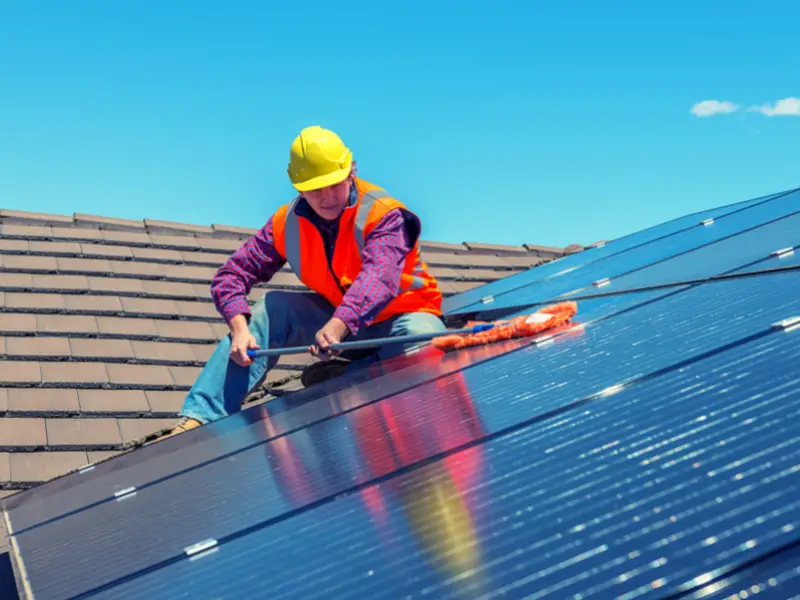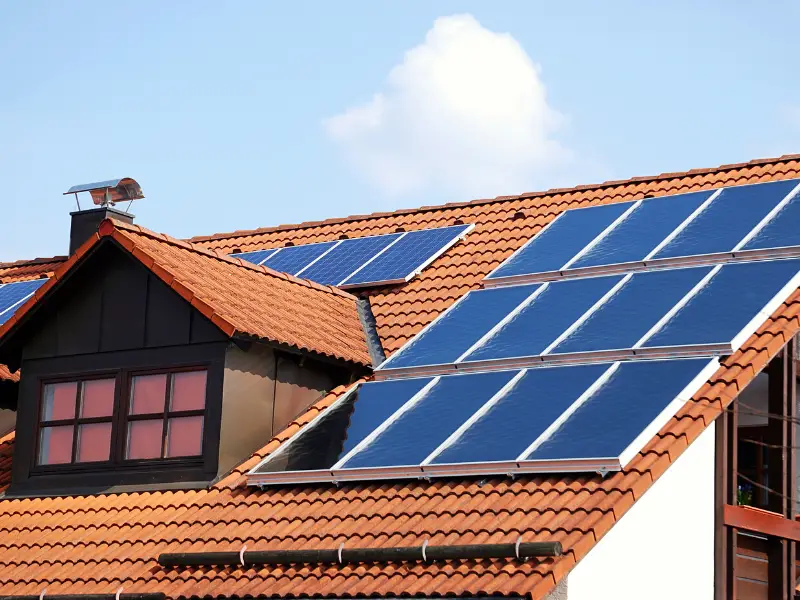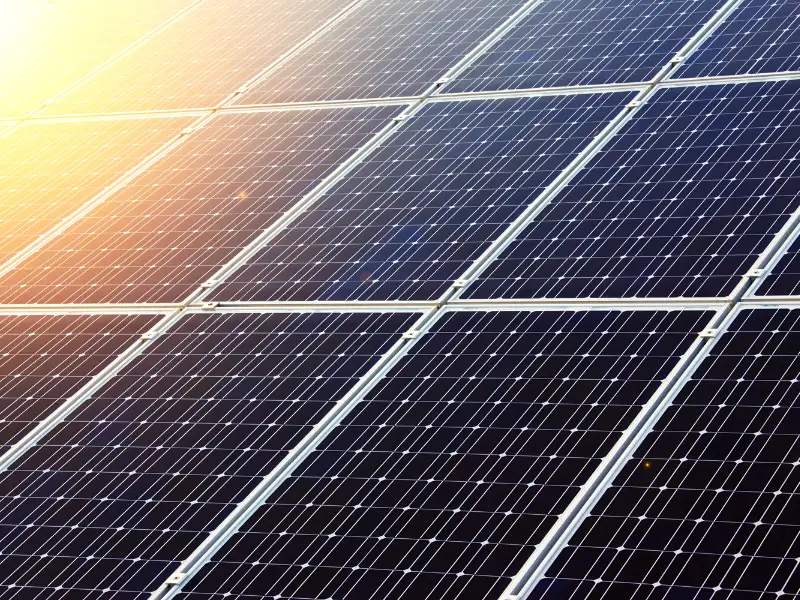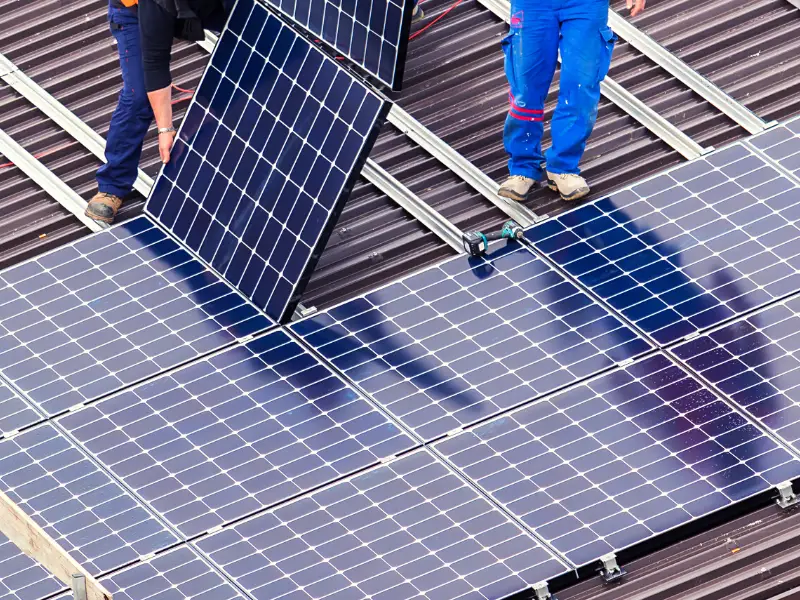In the world of renewable energy, solar panels are taking the spotlight.
These panels capture light and convert it into usable electricity. But can you walk on them? Find out in this article!
Is It Safe for Homeowners to Walk on Solar Panels?
Before we get into a discussion about whether solar panels can tolerate someone walking over them, let us evaluate first if the person walking on a solar array can suffer any discernible harm if s/he does so.

Walking on a Solar Panel Will Not Get You Electrocuted
People are occasionally told not to step on solar panels because of the risk of being electrocuted.
You can rest assured that this is complete nonsense. You are not walking on a minefield of electric sparks. While the solar modules create electricity within the panels, the current is routed through safe wiring to an inverter device, which converts the DC generated to AC and power household equipment.
Treading in Solar Panels Introduces the Dangers of Dirt
Another reason that walking on solar panels is discouraged is dirt.
Dirt and dust accumulate on the panel surface and reduce the effectiveness of the susun’sns rays being harnessed. When dirt and dust become trapped on clean solar panels, they form layers of shade that reduce how much sunlight reaches the photovoltaic cells within the module. This can decrease energy production by as much as 80%.
One major problem is any grit, stone chips, and small shards that your shoes might have accumulated. Any hard debris lodged in the sole of your shoe will scrape and damage the panel’s surface. There’s a big chance it can penetrate the solar panel with just enough force.
The extent to which this will impact the panel varies according to the type, but it will be detrimental. Additionally, if you attempt to return a panel as defective, the manufacturer may raise concerns if they discover a footprint scattered on the panel’s surface.
How Much Weight Can Solar Panels Handle?
The capacity of standard roof-mounted solar panels is 50 pounds per square foot, with a maximum capacity of 75 pounds. However, you should avoid stepping on or laying anything on top of your panels since this can cause damage and restrict sunlight.

While solar panels are unquestionably more resilient than they were in the past, they still have limitations regarding what they can bear. Before adding anything to your panels, there are a few things to consider that could block the photovoltaic cells.
Some Risks of Walking in a Roof’s Solar Panel
Walking across most rooftops is already a difficult and awkward chore, but walking through solar panels adds some more challenges:
- Solar panels have a smooth surface and provide minimal grip.
- Walking across solar panels can cause scratches and micro-fractures, reducing the output of a solar panel’s module.
- If you are obstructing the sun during peak daylight hours, you are decreasing the efficiency of your solar panel.
- Increased weight and stress on specific areas of your roof.
- If you’re roped off or carrying equipment, it’s possible that it will become twisted or wedged under the panels, causing the framework to become loose or pull off the wires.
- If you are carrying heavy parcels or equipment, it’s possible that you could fall through the roof and crush your solar panel.
- Talk to an expert if you are unsure what may be acceptable to your solar panels.
IMPORTANT: If you’re going onto your roof, it’s always wise to tie yourself off with a rope and wear suitable, grippy boots. Navigating around solar panels introduces additional hazards, and you must ensure that any rope or other harnessing does not tangle on the solar panel racking.

What if You Can’t Avoid Walking on the Solar Panel?
When you must move across a panel, there are a few things you can do to cut down the possibility of causing damage:
- If you maintain yourself low and move on all fours, you will be able to distribute your weight more evenly, reducing the amount of pressure you place on any particular area.
- Move gently since moving quickly means that you are pressing harder and applying more pressure.
- Keep all of your points of contact as close as possible to the location where the panel is fixed. This will put more strain on the panel supports than on the solar panel itself.
It Does Depend on the Type of Panel
It is not uncommon to see commercials for solar panels reassuring homeowners about their durability. Frequently, the panels being lauded are those used in heavy walking areas. Here are some examples:
- Marlec Engineering’s Spectralite Walk-On Solar Panels
- Solara’s Standard and Power M Series
- Certain thin-film panels
- CMPower’s Semi-rigid Walk-On Marine Solar Panels with A+ Grade SunPower Cells
- Some types of panels can withstand a lot of weight. However, the jury is still out to decide whether the makers claim how indestructible or durable these panels are accurate. Here are some of them.
- Tesla Solar Roofs are promoted as safe for people to walk on; however, there is insufficient long-term data to verify whether this is accurate.
- There are solar panels made to be used on sidewalks and roads, such as the Solar Roadways system made in the US. These are examples of panels that can withstand a lot of weight in their natural course of use. However, the overall viability of the systems isn’t clear yet. There have been a lot of stop-and-starts for programs like this, and the data isn’t always consistent.
You’ll Love This Eco Advice: Eco Mist Hardwood Cleaner, Ebb and Flow Candles, Vegan Belt

Author’s Note
In conclusion, it’s best not to walk on solar panels unless you have to. Damage to the solar cells and modules that make up the solar energy system may not be visible right away, but it will significantly affect how well it works. Over time, natural elements will make the damage even worse.
While manufacturers design some panels to withstand weight, most solar panels can be damaged by applying pressure. For the occasions when you must walk on the panels, you should take all the necessary precautions to avoid damaging your inversion or unnecessarily reducing your energy production.


I agree with your point of view, your article has given me a lot of help and benefited me a lot. Thanks. Hope you continue to write such excellent articles.